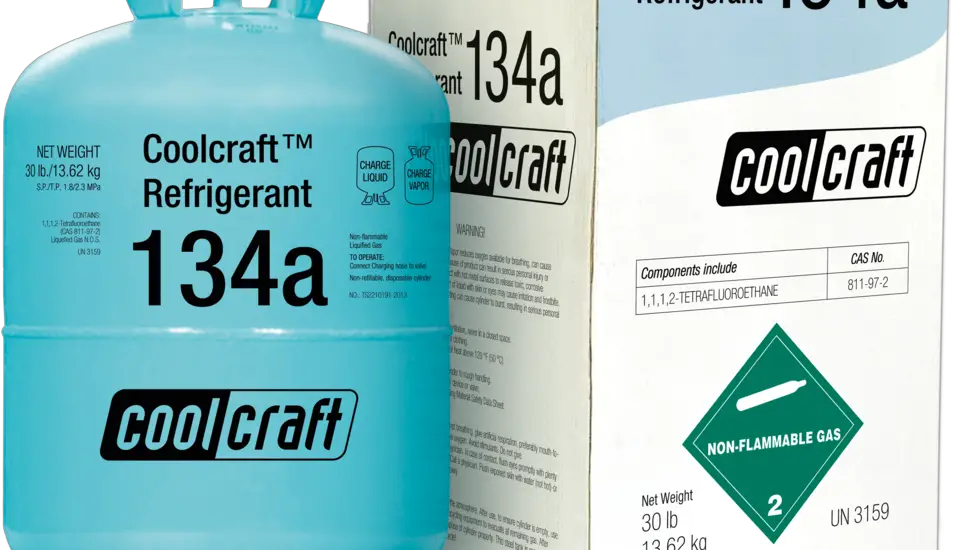Ever wrestled with the ODP of refrigerants? Wondered why it matters in your daily life? Let’s not dilly-dally, time to get our hands dirty and clear the fog around this jargon-filled, yet surprisingly fascinating topic.

Table of Contents
Understanding the Concept of Ozone Depletion Potential (ODP)
Defining ODP
First up, ODP stands for Ozone Depletion Potential. Sounds complex, right? Well, think of it as a scorecard that tells you how much a particular substance, like a refrigerant, can potentially harm the ozone layer. Higher the ODP, more the damage, it’s that simple! It’s kind of like cholesterol – the lower, the better for your health! Or in this case, the health of our planet.
ODP Measurement and Impact
How do we measure ODP, you ask? It’s a comparison game. We compare the potential of a substance to deplete the ozone layer to a reference substance, which is trichlorofluoromethane (CFC-11). Now, why should you care about high ODP refrigerants? Well, the answer is right above you. The ozone layer. It’s our planet’s very own pair of sunglasses, protecting us from harmful ultraviolet radiation. So, high ODP refrigerants? Definitely not something we want around.
Common Types of Refrigerants and their ODP Values
Chlorofluorocarbons (CFCs)
Now, meet the infamous Chlorofluorocarbons, or CFCs. Ever heard of CFC-11 or CFC-12? Yep, those are members of the CFC family, and they’re known for their high ODP values. Imagine them as the bullies of the refrigerant playground, causing a lot of trouble to our ozone layer.
Common Uses of CFCs
You might wonder where we usually find these CFCs. They’ve been used for decades in air conditioning, refrigeration, and even aerosol propellants. Just imagine all those old fridges puffing out CFCs!
Hydrochlorofluorocarbons (HCFCs)
Next in line are Hydrochlorofluorocarbons, or HCFCs. Their ODP values? Lower than CFCs, but still a problem. HCFC-22 and HCFC-141b, for example, have been quite popular, but with the knowledge we have now, it’s high time we gave them a break, don’t you think?
Common Uses of HCFCs
HCFCs have been used as a less damaging substitute for CFCs in refrigeration and air conditioning. However, despite their lower ODP values, they’re still not off the hook. Lower doesn’t mean harmless, after all!
Hydrofluorocarbons (HFCs)
Last, but certainly not least, are Hydrofluorocarbons, or HFCs. They’ve got zero ODP. That’s right, zilch, nada! But don’t start celebrating just yet. HFCs might not harm the ozone layer, but they’re a significant source of greenhouse gas emissions.
Common Uses of HFCs
Where would you typically find HFCs? They’re most commonly used as refrigerants in air conditioning, especially in cars. However, with concerns about climate change mounting, we’re beginning to rethink even these zero-ODP alternatives.
For more articles on refrigerants, click here: Articles on Refrigerants: The Ultimate Guide to Understanding Them
Which Type of Refrigerant has the Highest ODP?
Identifying the Refrigerant with the Highest ODP
So, which is the worst offender when it comes to ODP? It’s the CFCs, with CFC-11 being the main culprit. It’s like that bad apple that spoils the whole bunch!
The Impact of the Highest ODP Refrigerant on the Environment
And the impact of CFC-11? Let’s just say it’s like setting off a tiny, slow-motion bomb in the ozone layer. Not a pretty picture, is it? In fact, scientists believe it was responsible for about 25% of all ozone depletion.
The Future of Refrigerants and ODP
Alternatives to High ODP Refrigerants
The future, though, isn’t all doom and gloom. There are alternatives out there with far less damaging ODP. Hydrofluoroolefins (HFOs), for instance, have zero ODP and lower global warming potential than HFCs. It’s like swapping out your gas guzzling SUV for a nifty, energy-efficient hybrid.
Regulations and Policies Affecting High ODP Refrigerants
And let’s not forget about the role of regulations. They’re like the strict school principal, cracking down on the use of high ODP refrigerants. Take the Montreal Protocol for example. It has been instrumental in phasing out CFCs and HCFCs.
The Trend Towards Zero ODP Refrigerants
Finally, we’re seeing a trend towards zero ODP refrigerants. It’s a bit like switching from junk food to a healthy diet – it might not be easy, but it’s definitely worth it. Will we be able to achieve a world without ozone-depleting refrigerants? Let’s hope so, because our future literally depends on it.
So there you have it. The skinny on the ODP of refrigerants. Intriguing, isn’t it?
